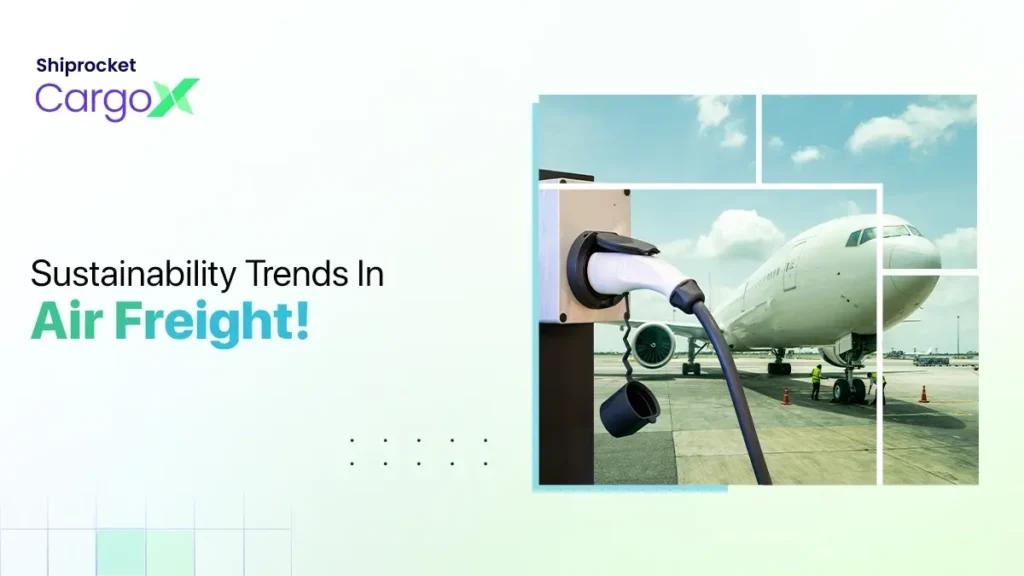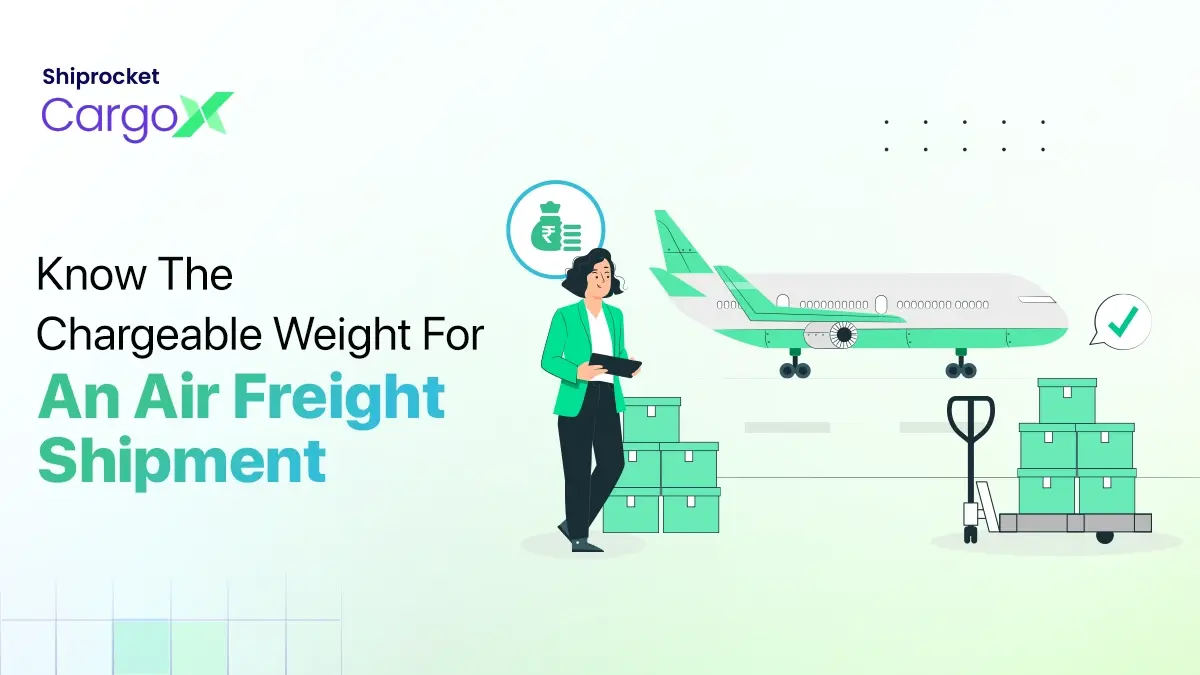Sustainable Air Freight: Trends and Insights
We might be progressing in all areas of technology and finding alternative solutions to enable our day-to-day work to become more efficient. However, have you ever wondered how these impact our environment? With airways now being a popular option in the world of logistics, we must consider the ramifications of our actions and come up with sustainable solutions. Sustainability in the air freight world is an up-and-coming trend that intends to make the use of airways to ship consignments as green and clean as possible, with minimal damage to our environment.
With sustainability and sustainable practices on the rise, you must know about the different initiatives adopted in the air freight world today to be an active contributor to these green initiatives. This article elaborates on all the eco-friendly steps taken, the role of the ICAO in promoting sustainable air freight, the trends we see in the industry, its challenges, and the future view on this segment.

ICAO’s Role in Promoting Sustainable Air Freight
Sustainable Air freight is a primary driver toward the United Nations’ aim of achieving their 2030 sustainable development goals (SDGs). Air freight plays a central role by posing as the trade facilitator for small island developing states (SIDS), least developed countries, and landlocked developing countries (LLDCs). They provide businesses in these countries the opportunity to link untouched markets and connect across continents to get introduced into the global supply chain.
We can see tangible benefits of air freights in these regions, with a reduction in poverty rates. The World Trade Organization and the World Bank have decreed that international trade contributes primarily to reducing poverty due to the opening of new employment chances. For Instance, internal and global trade has proven beneficial to farmers and the agriculture industry as they can expand their market by exporting their products. They also bring about changes structurally to enhance the economy and increase the employment rate of low-skilled and poor workers in several countries.
Air cargo has been, for years, a part of the global supply chain that facilitates the integration of the worldwide economy. By enhancing the air trade provisions in all regions, trade costs are likely to decrease substantially and the competitiveness of the goods and services produced shall increase. The ICAO is committed to enhancing the economic importance of air freight and global trade.
Current Trends Highlighting Sustainability in Air Cargo
Sustainable initiatives are crucial to ensure that our environment is not harmed due to our progress. For instance, all the paperwork that is necessary to ship a parcel via air can be made digital to avoid the abundant physical papers used, that cause substantial environmental degradation. It would be a brilliant method to avoid papers that would be redundant once the transaction is complete.
Here are a few more trends that we see in the air cargo logistics world to showcase sustainability:
- Paperless trade:
As mentioned before, digitisation is crucial to achieving sustainability goals. While adopting modern technology solutions, we have minimised the duplication efforts, and the massive amounts of paperwork, and also allowed the staff to work from their houses. More importantly, digitisation has minimised the efforts required for paper handling and social contact.
- Security and safety:
The warehouses, the freight handling facility, trucks, in-transit areas, and unmonitored parking locations are some of the most common places where cargo theft takes place. A good security team and cyber security law is mandatory to ensure that such situations are handled. A solid framework for risk mitigation must be designed by the concerned authorities and regulatory bodies. Stakeholders involved should be able to identify the status of the movement of cargo at all levels. The root of these threats can be analysed to improve the security of the freight.
- Rise of e-freight:
e-freight has been sought after for a long time in the logistics world. Air freight software has begun to provide virtual methods for freight forwarding processes. During the COVID-19 pandemic, the importance rose to its peak and several tolls were deployed by the logistics world to minimise the paper touchpoints. Although the toxicity of these touchpoints is concentrated on a few front liners, the big leap is now clearly visible. Several stakeholders in the air cargo industry have taken up air freight software methods and have adhered to e-freight rules and regulations.
- Analysing fuel consumption during transport with predictive analytics:
Fuel usage is the biggest outcry of people who advocate for the protection of the environment. Modern air freight software and cargo community system solution providers must develop Al and ML-based applications to easily spot shorter routes to minimise fuel consumption.
- Digital communication and immediate assistance:
Allowing digital communication among the stakeholders is a crucial part of the adoption of modern technology. It will ensure that the stakeholders have complete visibility of the shipping processes. It is also necessary to ensure security and timely arrival of the cargo in the designated location. Hence, digital communication is crucial.
Challenges and Opportunities
Several sustainability measures have been implemented in the air freight logistics industry. These include initiatives for the reduction of carbon dioxide emissions. To achieve this, planning and long-term approaches must be devised. Here are some opportunities and the challenges the air freight industry faces:
- Sustainable Aviation Fuel (SAF): A new ecosystem must be developed around the use and distribution of sustainable fuels. It is a challenge as the development of such a fuel can be extremely difficult. At the same time, it provides opportunities for growth and development. Vehicles will need fuels that do not require combustion and the invention of such a fuel requires strong research.
- Harmful goods and lithium batteries: Some items being shipped via air can be a threat. For instance, transporting lithium-ion batteries needs special regulations. Any type of short circuit or internal defect can cause it to heat up and explode within the aircraft. Such challenges are a constant reminder for establishing a safe and secure mode of transport.
- Cyber-security: Cyber-security is a vast topic and is a bigger issue. It is relevant even outside the air freight world. The dependency on digital technologies has increased the opportunity for cyber thefts, attacks, and hacking. It is capable of grounding the entire aviation network and hence is one of the greatest challenges. The aviation industry should employ tech savants to develop a more secure method to avoid these challenges. Although there is no evidence of hackers controlling the air traffic manager or the air commands, the risk is substantial.
Future Outlook
Aviation is a sector that has immense scope for sustainable development. Hence, innovation and technology are rather crucial to deploy more sustainable procedures. Efficient management and the impact of AI on autonomous flights can be one such thing to look forward to in the air logistics world. Although artificial intelligence has already managed to streamline flight routes for better performance and sustainability, it will be harder to deal with the increase in air traffic. With AI, autonomous flights can be created and management will become a lot easier with few accidents and disasters.
Here’s how Shiprocket is transforming international shipments.
Shiprocket’s CargoX facilitates B2B cross-border shipments in just a few clicks. It helps you transport heavy and bulky goods with air cargo shipping. CargoX services are quick, transparent, and extremely dependable. It assures complete pickup just within 24 hours, with no hidden charges, and offers an extensive courier network.
CargoX guarantees the safe delivery of your shipments to its destination. It has network coverage of more than 100 countries.
Conclusion
Sustainable practices must be adopted from the very beginning to improve the environment we live in. With advancements in technology, we should also ensure that these developments are not harming our surroundings. The ICAO and other regulatory bodies are working tirelessly to improve the air freight logistics world. Green initiatives must be developed and deployed to ensure that the air freight logistics world does not cause irreversible damage to the environment while bringing the global marketplace closer.
One of the key programs to promote sustainable air freight is the Sustainable Air Freight Alliance (SAFA). It’s an initiative that brings together airlines, freight forwarders, and shippers to track and reduce their carbon dioxide emissions. In the last three years, more than 23 airlines have reported their carbon emissions through aviation surveys by the SAFA.
Yes, air carriers can reduce carbon emissions. There are several strategies to achieve this, including the adoption of sustainable aviation fuel (SAF), optimising routes of flights, improving operational efficiency, and investing in carbon offset programs.
As the name suggests, sustainable aviation fuel, or SAF, is made from sustainable resources. These include agricultural residues, waste oils, and even captured carbons. SAF emits significantly less carbon dioxide as compared to conventional fuels when it burns. That’s why it is considered one of the most effective strategies for reducing carbon emissions by the aviation industry.
Yes, there are several benefits of sustainable air freight. These include reduced emissions of greenhouse gases, carbon offsetting, cost-efficiency, improved business operations, and the preservation of the environment.




